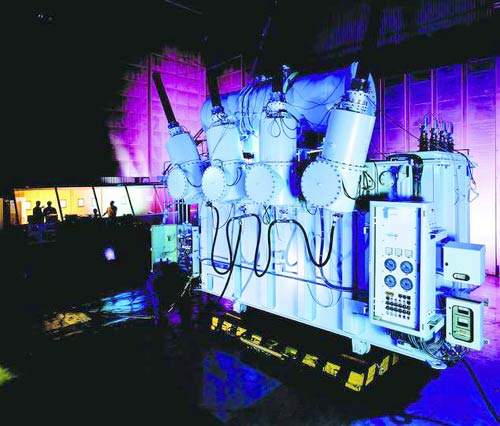The Västhamn Combined Heat and Power plant in Sweden was extended by a 220MW CCGT (combined-cycle gas turbine) unit. The boiler supplies steam to an ABB Stal ATM steam turbine which drives an ABB GTL 1350 ET generator. The turbine produces a total of 64MWe. The exhausts from the steam turbine are fed into two-stage district heating condensers. It supplies 129MWth for the district heating network.
Helsingborg Energi AB (HEAB) owns Helsingborg Energi Produktion AB (HEPAB), which, in turn, owns the Västhamn combined heat and power plant. HEAB is a municipally owned utility with sales of more than SEK1 billion (about $125 million). The Vasthamn plant produces all the corporation’s heat, as well as much of its power.
Electricity supply to the municipality was reduced by the closure of the Barsebäck nuclear power plant in 1999. Aside from the Västhamn plant, HEPAB owns several small biomass, hydropower and wind facilities.
Vasthamn plant details
The plant has three-stage flue gas cleaning equipment, also supplied by ABB. The equipment includes an electrostatic precipitator, a sulphur dioxide scrubber and a fabric cleaner. Originally, the boiler was fired by coal, with oil as a backup. It is now frequently supplied with wood, partly for cost and partly for environmental reasons. Wood produces less ash, sulphur dioxide, and nitrogen oxides. The drawback is lower efficiency as the boiler cannot operate at full capacity. The Västhamn plant is well within emissions requirements and has, since opening, dramatically decreased its use of coal. In the longer term, it aims to phase coal out completely. Sulphur emissions are below 3mg/Mj of burned fuel (the Swedish limit is 50mg/Mj).
The aim of the plant extension is to increase electrical output without greatly increasing the heat or the environmental costs. The first option considered was a condensing steam turbine. The second was a CCGT. The latter was chosen on the grounds that the heat and electricity generation would go together, which is also the demand pattern in Helsingborg. The second factor in its favour was its use of natural gas. A condensing steam turbine would have used coal which, as the company is committed to lowering coal use levels, would conflict with its environmental objectives. As the CCGT plant allows the boiler to operate at less than full levels for a longer period, coal consumption is lower with the second option.
The plant’s gas turbine was an ABB GTX100. This has a simple-cycle production of 43MW at 37% thermal efficiency. The plant has a footprint of 27m x 7m. This allows the extension to cover an area 60m long, but only 20m wide, hence permitting further expansion.
Shaft design
The GTX100 uses a simple shaft design, with the compressor rotor and the three-stage bolted turbine on a single shaft. It uses tilting pad hydrodynamic bearings. The compressor has 15 stages and the combustor is annular. The inner surface has a thermal coating to prevent heat transfer and extend the equipment’s life. The burners are dry, low-emission devices using ABB’s EV design. These allow very low emissions below 15ppmv for carbon monoxide and NOx emissions on natural gas. For liquid fuel, this figure changes to 25ppmv. The new plant will also allow switchover between fuels when at full load.
Generator
The plant will have a four-pole 66MVA/11.5kV generator, and will keep its existing steam turbine generator. Extra cooling will allow the old generator’s capacity to increase from 75MVA to between 83MVA and 85MVA. This means that the gas turbine generator has to be run at much lower than normal capacity (to compensate for the old generator being run at almost total capacity). The consequence is that the new generator is larger than it would normally be.
The equipment came in modules which were tested in the factory before swift erection on the site. The plant extension was designed not only to take a minimum of time, but also to have minimal impact on the skyline as seen from the town.
Boiler
The boiler is the least flexible element in the new system, and cannot accommodate more than a few stop/go sequences each year. The gas turbine cycle, therefore, had to give greater flexibility. The gas turbine can run in a combined cycle. It can run disconnected from the heat recovery steam generator (HRSG), and it can run with input solely from the HRSG. The plant will not achieve the same output as an all-new CCGT plant, since it is an upgrade of an older plant. However, with a firing capacity of 121MW, the plant produces 58MWe, and 51MWth if operated with the boiler at full load. Without the boiler, the plant produces 56MWe and 53MWth.





